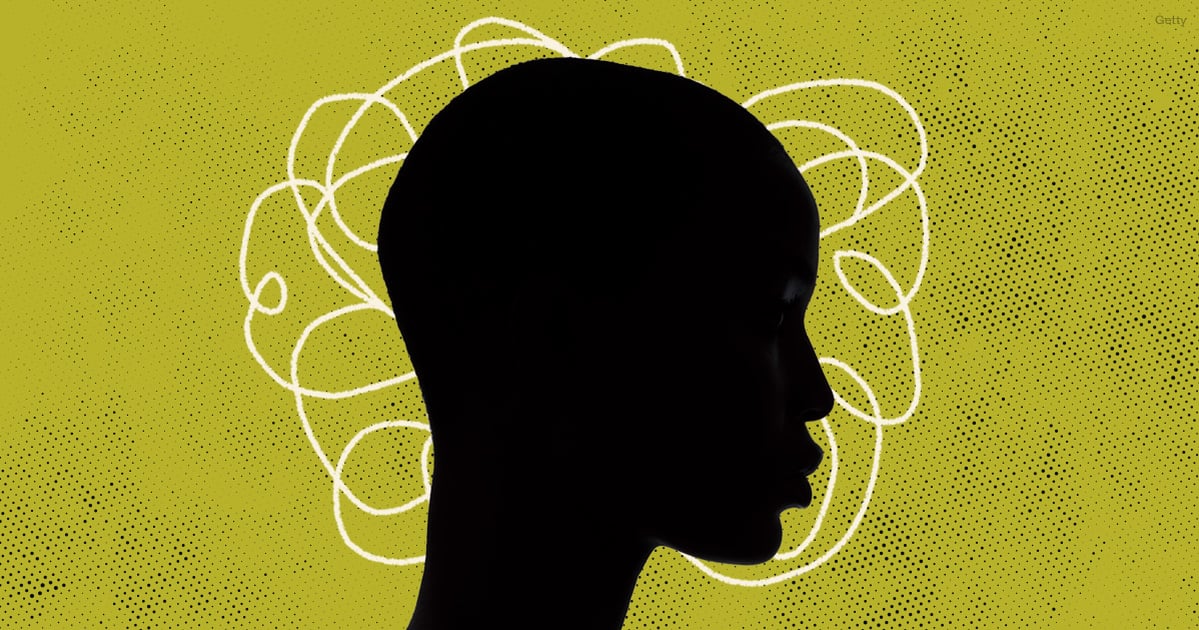I grew up in a dysfunctional household plagued by addiction, with two alcoholic parents who struggled with substance abuse. Unsurprisingly, this led to my experiencing a very traumatic childhood. My upbringing was dysfunctional, marked with verbal abuse and fighting that led to my experiencing panic attacks at age 4 or 5.
As a teenager, what was happening at home started to present physically on my body. For starters, I used to compulsively bite my nails to the point that they’d bleed and it would hurt to pick things up or put my clothes on. When I was 14, I had a very bad case of temporomandibular joint pain, to the point where I didn’t want to open my mouth. My dentist asked me if anything was going on at home, as TMJ can be caused by stress and anxiety. I knew the answer was yes, but I didn’t know how to vocalize what I was dealing with at that age, especially to a dentist.
Once I got to college at age 18, I started experiencing other symptoms that made me initially think I was having heart problems. I was experiencing chest pains and was so exhausted that I often couldn’t get out of bed. I eventually received a diagnosis of generalized anxiety disorder, which immediately made me feel ashamed. Where I grew up in Mississippi, and especially amongst my family, it’s looked down upon to need medication and mental health care. The implication was always that you “weren’t tough.” As a result, I didn’t pursue therapy beyond a few free, but inconsistent, sessions at my university. In the meantime, I cut my dad out of my life because I didn’t know how to cope as he was struggling with addiction.
It wasn’t until I started therapy in 2021 at age 23 that I learned I was suffering from post-traumatic stress disorder and began connecting the dots between various traumatic life events and certain symptoms or habits I’d developed. There were memories I’d pushed down and that had popped up for the first time in years, including being forcibly kissed by an older child at age 5, being molested at 15, and being raped in college. These cumulative experiences led to my body freezing up whenever I would willingly attempt to have a sexual relationship with someone. I later learned that was a trauma response because I didn’t feel safe, but at the time, I thought something was wrong with me.
Eventually my therapist diagnosed me with PTSD and a year later I saw another therapist specializing in trauma therapy, who diagnosed me with C-PTSD, a condition that can develop after long-term exposure to trauma.
How I’ve Learned to Manage My Stress Disorders
My therapist first recommended I join a support group, so I started with Al-Anon, which is a 12-step program for friends and family members of alcoholics. My support group meetings have completely changed my life and given me so much confidence, hope and strength.
I’m currently working through the 12 steps of Al-Anon with a sponsor. I’m constantly learning things about myself as the child of an alcoholic, including that I have many characteristics of an alcoholic, but without the substance abuse – a common phenomenon among children brought up by parents with substance abuse problems. These characteristics include becoming isolated, having an overdeveloped sense of responsibility, judging myself harshly, and experiencing low self-esteem – all aspects that I’m learning to work though.
Therapy has also been a crucial part of my journey. The type of therapy I’ve pursued is faith-based and has taught me to be able to “live and let God,” or detach with love. In the case of my now ex-boyfriend in rehab, it meant eventually breaking up with him. Even though we still talk and are friends, I knew a romantic relationship wasn’t beneficial. Therapy also helped me rekindle my relationship with my father, who is now three years sober. Unfortunately, most of my other family members have not supported my mental health journey and there are still various members I cut off all contact with. My mother will even still deny that I experienced childhood trauma that led to my diagnosis. Learning how to put up these boundaries has been vital for my healing.
Another coping mechanism that has helped immensely is journaling, which I initially didn’t want to do, even at the recommendation of my therapist. But it has ultimately been really beneficial for my healing. I’m learning to be more compassionate toward myself, but I also know I still have a lot of forgiving of family members to do as part of my healing – and it’s really hard to forgive. Journaling has helped me work through that process.
My Mental Health Is Still a Journey
After receiving my initial diagnosis, some of my symptoms have started to go away. For starters, I’ve been able to grow my nails out for the first time in my life, which is amazing to me.
That was something I didn’t realize – that you can actually heal from PTSD and I won’t have it forever. That’s made me feel like a weight has been lifted. On the other hand, earlier this year I received two additional diagnoses: major depressive disorder and panic disorder. My therapist has told me that self-compassion alleviates suffering, which is something I’m trying to live by. This can include doing things I enjoy just because, like listening to Taylor Swift‘s music, treating myself to a chai latte, painting my nails, or even going on a walk. The more I do things out of self-compassion, the more I feel I’m being lifted out of my depression and any slump I’m in.
But more than anything, talking about my experience and telling people about my story has made me accept that it’s real and not something I just need to get out of my head. They say “secrets make us sick” in Al-Anon, which literally proved to be true in my case, with the symptoms I experienced. In addition to my full-time job as a marketing specialist in the travel and tourism industry, I’m also a content creator. Sharing about my diagnosis and experience on TikTok has also helped me find a community, which has been invaluable. When I first made videos on social media, I had no idea so many people were going to relate to them and it made me feel normal, validated and less alone.
At the same time, I wish other people could be more compassionate. I had an employer once tell me to toughen up, that I just needed thicker skin and that I can’t keep going to therapy appointments forever. Those comments are dismissive. PTSD is like a wound you can’t see – just because I may look like I’m OK on the outside doesn’t mean I’m OK on the inside.
To others experiencing a similar diagnosis, I’m here to say I know what it’s like to be terrified to speak your truth. Going to my first Al-Anon meeting was probably the hardest part for me, and I spent the first month crying before ever really talking. But know that there is support out there. You just have to find it and be open to accepting it.
– As told to Emilia Benton
Emilia Benton is a freelance health and wellness journalist who is particularly passionate about sharing diverse stories and elevating underrepresented voices. In addition to PS, her work has been published by Runner’s World, Women’s Health, Self, Outside, and the Houston Chronicle, among others. Emilia is also a 13-time marathoner and a USATF Level 1-certified run coach.




